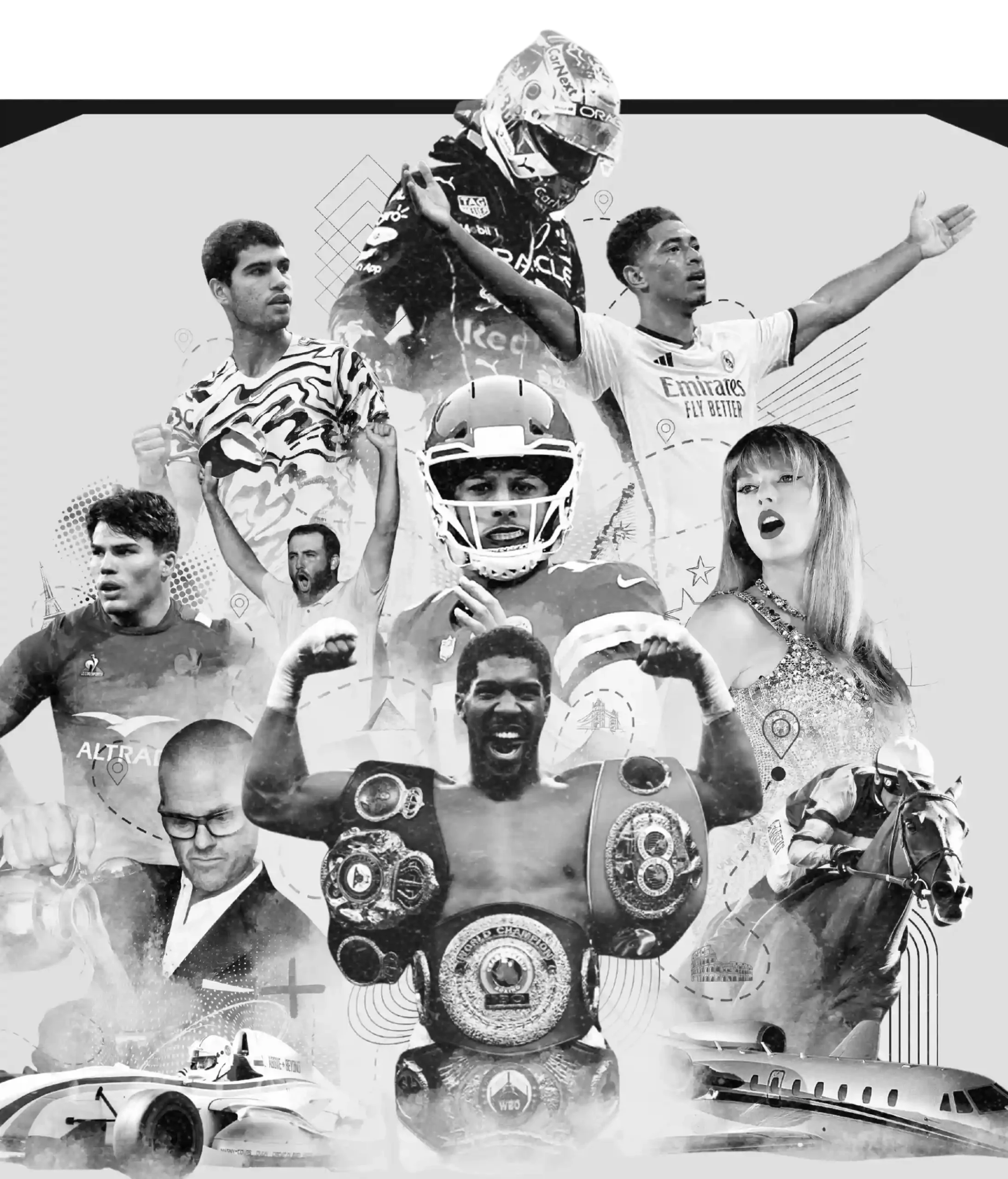Palio Di Siena with Above + Beyond
Let’s Make It Happen
Unforgettable experiences. Exclusive access. Whether it’s front-row seats, VIP hospitality, or a bespoke getaway, we make it happen – just for you.
Start Your Journey →
The Palio di Siena is a short, ferocious bareback race run within a medieval city square — and that combination of speed, proximity and tradition is why it is widely considered the most dangerous horse race in the world. Twice each summer, Siena’s rival districts (contrade) contest three laps of the Piazza del Campo, in a spectacle that lasts around 90 seconds but is prepared for over four days and lived year‑round by the city’s residents.
Key facts at a glance
- Dates: 2 July (Palio di Provenzano) and 16 August (Palio dell’Assunta)
- Location: Siena, Tuscany, Italy
- Venue: Piazza del Campo (a medieval, shell-shaped square)
- Festival length: Four days per Palio, including trials and pageantry
- Format: Ten contrade compete; three laps of the piazza
- Riding style: Bareback (no saddle or stirrups); contrada colours only
- Typical race time: Around 90 seconds from start to finish
- Entry system: Five contrade carry over from the previous Palio; five are drawn by lot
- Prize: The Drappellone — a unique hand-painted silk banner created for each race
- Origins: First officially recorded Palio in 1633
- Recent highlight: 2 July 2025 won by l’Oca (Goose) with jockey Giovanni “Tittia” Atzeni on Diodoro — his 11th victory
What makes the Palio the world’s most dangerous horse race
The Palio’s risk profile is set by its environment and rules, not speed alone. Riders compete bareback at close quarters on a narrow course that hugs Siena’s historic square. With no saddles or stirrups, body balance and grip are everything; even the most experienced jockeys frequently part company with their mounts.
Treacherous turns on a medieval circuit
The course is temporary, laid over stone with a compacted blend of tuff, clay and sand. It loops the piazza’s shell shape, compressing the field into two notorious bends — San Martino and Casato — where lateral forces are extreme and collisions are common. The outside is lined with barriers for public safety, but the racing line offers little margin for error.
Falls and riderless victories
In the Palio, the horse is paramount. A contrada can win even if its jockey falls; riderless victories are celebrated, and falls are an accepted, if sobering, part of the contest. This simple rule encourages relentless riding through turbulent traffic and contributes to the race’s uncompromising reputation.
Short, violent and decisive
With only three laps, position into the first turn can settle the outcome within seconds. The start — controlled by ropes and a finely judged release — is itself a high-stakes moment, as ten horses jostle in confined space awaiting a fair launch. Once released, gaps open and close rapidly; decisive moves have to be made under significant physical and psychological pressure.
Contrade: rivalry, identity and regulation
Siena’s 17 contrade are more than neighbourhoods. Each is a civic institution with its own oratory, heraldry and social calendar. Only ten compete in each race: five earn automatic entry from the previous Palio, and five are drawn by lottery. Discipline is strict. Penalties can lead to exclusion — as seen in 2025 when Aquila and Torre were ruled out of the July race — underscoring the event’s structured governance.
Horses (known locally as barberi) are assigned by lottery, equalising the field and deepening the tactical complexity. Because a contrada cannot choose its mount, preparation becomes a crash course in bonding horse and rider, and in adapting tactics to the animal’s temperament and turn of foot.
Four days of ritual and risk: how the Palio is prepared
The Palio is not a single afternoon but a carefully staged programme:
- Horse draw: Each competing contrada receives its horse by public lottery, setting the tone for strategy and optimism.
- Six official trials (Prove): One on the evening of the draw, then morning and evening for the next two days. These short runs build understanding between horse and jockey and familiarise both with the surface.
- Track preparation: The piazza’s stone is covered with a compacted mix of tuff, clay and sand to create a consistent, fast surface.
- Safety measures: Barriers protect spectators, modern crowd management is in place, and children are no longer allowed to stand in the centre during the race (they must watch from bleachers or windows).
- Corteo Storico: On race day, a formal historical pageant with flags, drums and the March of the Palio precedes the contest, reinforcing Siena’s centuries-old civic story.
History, meaning and the prize
While horse races were held earlier, the modern Palio format is documented from 1633. Its continuity is central to Sienese identity. Residents belong to contrade by birth or residence and participate year-round in social, charitable and cultural activities culminating in July and August.
On exceptional occasions, Siena stages an “Extraordinary Palio”, such as 9 September 2000 for the new millennium and 20 October 2018 marking a century since the end of the First World War. These additions testify to the Palio’s role as a civic ritual as much as a sporting event.
The winner takes the Drappellone, a one-of-a-kind painted silk banner created by a different artist for each race. Materially modest, symbolically priceless, it is displayed and cherished in the contrada’s headquarters for generations.
Watching the Palio safely and well
For many visitors, the Corteo Storico is the ideal prelude, offering time to absorb the pageantry before the race’s intensity. The piazza fills early; if you plan to stand in the centre, arrive hours ahead, wear a hat, carry water and accept that once inside the barriers you will not exit until after the race. Families should plan elevated viewing: bleachers, balconies and windows offer clearer sightlines and a calmer environment.
Local etiquette matters. Respect contrada spaces and colours, avoid blocking banners or ceremonial routes, and follow stewards’ instructions. Photography is welcomed but be mindful during the pageant and the start. For structured hosting, curated viewing and guidance on timings, many guests opt for organised arrangements; for example, you can explore a Palio di Siena 2026 package tailored to premium access.
Recent race notes: July 2025
The 2 July 2025 Palio di Provenzano saw l’Oca (the Goose) take victory. Jockey Giovanni Atzeni — known to all as “Tittia” — rode Diodoro to secure his 11th career Palio win, underlining how experience and composure remain decisive on Siena’s unforgiving circuit. The result also illustrates the event’s blend of continuity and unpredictability: legendary riders, new equine partnerships, and the ever-present risk that shapes every lap.
Above + Beyond Tip: Speak to our team to secure well-sited hospitality and premium viewing for the Palio di Siena so you can experience the intensity with comfort and expert guidance.
FAQs: The Most Dangerous Horse Race in the World | Palio Di Siena
There are two fixed annual dates: 2 July and 16 August. The race itself is three laps of the Piazza del Campo and typically lasts around 90 seconds, but it is preceded by a four‑day programme of draws, trials and pageantry.
Jockeys ride bareback at speed on a narrow, temporary track laid over a medieval square with sharp turns and heavy crowding. Falls are common and a horse can win without its jockey, which adds to the uncompromising nature of the contest.
Seventeen contrade exist, but only ten start each Palio. Five qualify automatically from the previous race; five are drawn by lot. Discipline is strict and penalties can affect participation in future editions.
Horses are assigned to contrade by public lottery a few days before the race. Six official trials help riders understand their mounts and refine tactics on the tuff-covered surface.
Children are not permitted to stand in the centre of the piazza during the race and should view from bleachers, balconies or windows. Elevated, reserved spots provide safer, clearer sightlines and easier arrival/departure.
If the surface is judged unsuitable (for example after heavy rain) the start can be delayed or the race postponed. Safety measures and crowd management are enforced while preserving the Palio’s traditional format.
The Drappellone is a large hand‑painted silk banner created for each Palio by a commissioned artist. Beyond being the winner’s prize, it is a symbol of civic pride and is displayed in the victorious contrada’s headquarters.
Join Us at the Palio Di Siena
Witness the thrilling horse race in Siena, where tradition and excitement come alive.

Above + Beyond
Welcome to the Best the World has to Offer. With over 30 years of experience, we're the trusted name in sports hospitality and bespoke experiences at the world's most iconic events.

Our Latest INSIGHTS
Timely takes. Trusted voices. Unmissable stories.


